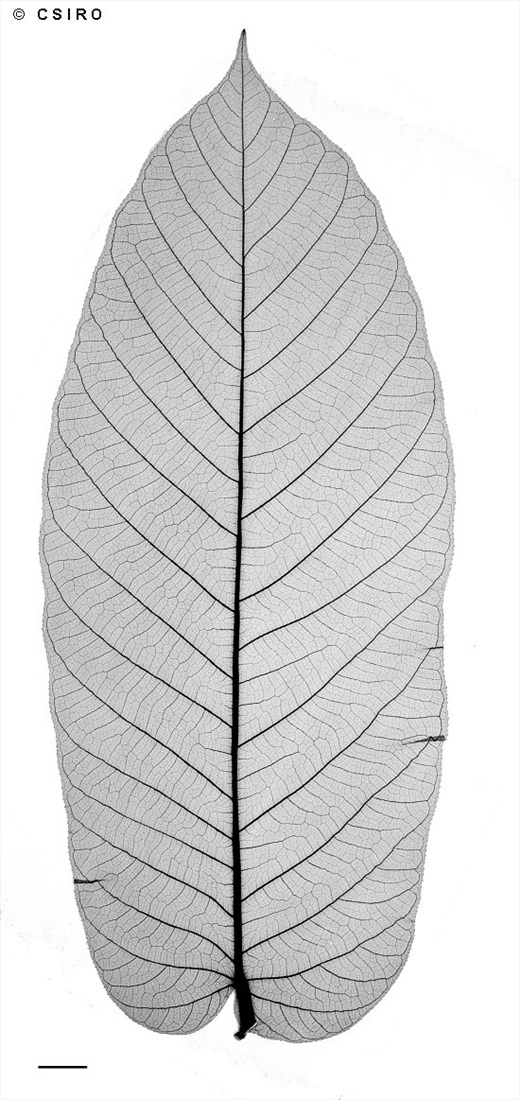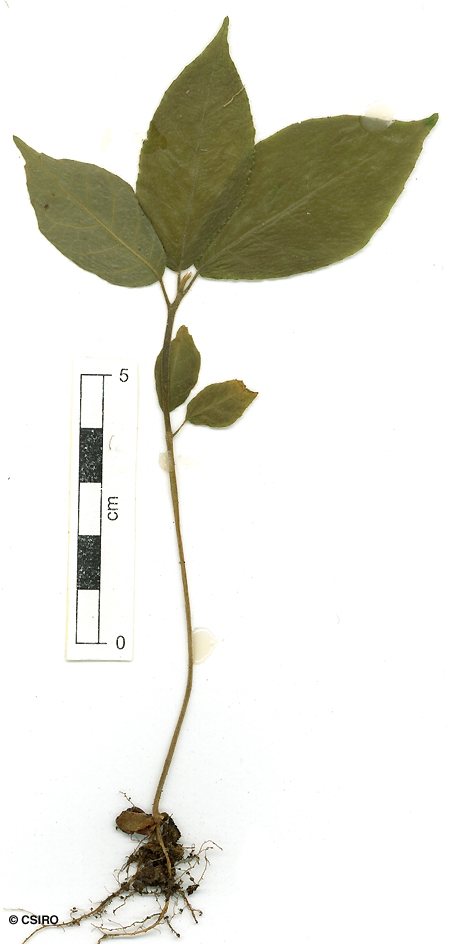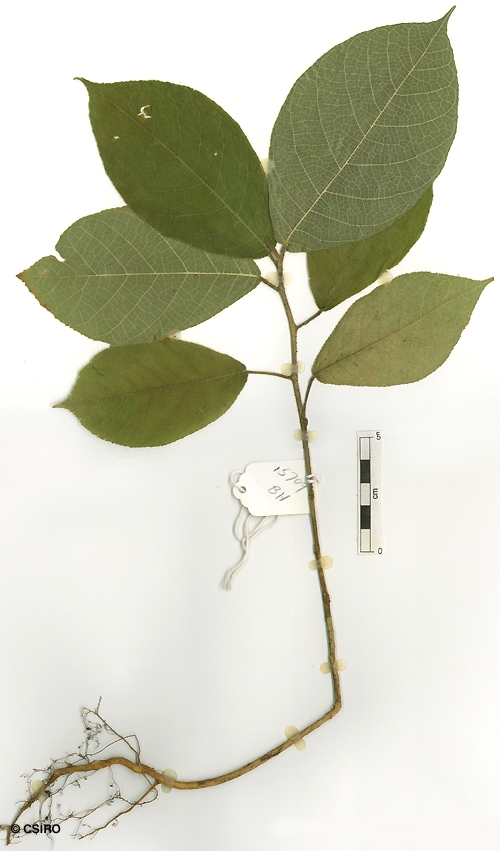Australian Tropical Rainforest Plants - Online edition
Castilla elastica Sessé



Cervantes, V. (1794) Gazeta de Literatura de Mexico Suppl. 3: 7. Type: Mexico.
Arbol del Hule; Castilloa Rubber; Caucho
Grows into a large tree. Bark exudate rapid and copious. Blaze odour resembles that of green beans (Phaseolus vulgaris).
Twigs, petioles and leaves produce a milky exudate. Leaf blades rather large, about 45 x 17 cm, petioles about 1-1.5 cm long. Stipules rather large, about 8 cm long, longitudinally veined and hairy on the outer surface. Upper surface of the leaf blades scabrous, lower surface hairy. Leaf blade margin appears to be toothed but closer inspection reveals that the 'teeth' are really tufts of hair. Lateral veins curving inside the blade margin but not forming definite loops.
Fruit is a flat disk of numerous green bracts with about 20-30 individual, orange-red, fleshy, 1-seeded fruits. Seeds about 8-10 x 6-8 mm.
First pair of leaves opposite, ovate to cordate, margins toothed, both the upper and lower surfaces clothed in prostrate hairs. At the tenth leaf stage: all plant parts produce a milky exudate. Marginal teeth are actually tufts of hairs on vein endings. Stipules with longitudinal parallel venation, outer surface hairy. Stipules sheathing the terminal bud. Stipular scars encircling the stem.
An introduced species originally from Mexico, Central America, Colombia and Ecuador, now naturalised in NEQ in the Cairns region. Altitudinal range from near sea level to 100 m. Grows in well developed but disturbed gallery forest, rain forest regrowth and on old farmland.
This species was probably deliberately introduced to the Kamerunga Research Station. It was used at one time as a source of rubber before Hevea braziliensis became the preferred source. C. elastica has become naturalised along the Barron River at Kamerunga and has spread into neighbouring areas.





